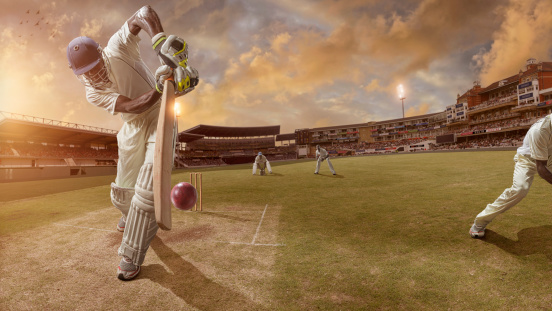A strong lotus exchange bowler keeps the crowd and the batters on the edge of their seats. In a cricket match, anything can happen at any time. All a bowler needs to do to win the game is to strike out a quality batter.
The bowling technique is difficult to master and takes a lot of time and practice. The abilities necessary to be a competent and fast bowler can be learned by strengthening the body and establishing a strong delivery.
It’s difficult to be a quick bowler. One of the two main delivery methods in cricket is fast bowling, with spin bowling coming in second. A competent bowler can be a valuable member of a cricket team, but developing these abilities takes practice.
Let’s start by discussing some cricket advice that will assist you in developing a solid bowling motion.
The throwing line is crucial because it establishes how much room the batsman has to maneuver. Your goal as a bowler should be to bowl your ball toward the stump. Put yourself in the “corridor of uncertainty” when bowling.
- All of this translates to the fact that the batsman will be under pressure to either hit a crap or get caught in this game, or if he misses the ball, he will be bowled, as long as you can keep the bowling in the right area. Although it is easier said than done, this technique may be mastered with practice.
- The duration of your ball release is also essential. The batsman does not have enough time to execute a shot on an ideal delivery. It must neither be too near nor too far from the bat because if it is, the ball will bounce, turn, or pitch in any direction.
- One of the main benefits of being a bowler is knowing how to utilize the length. They are capable of confusing the batter by delivering in a variety of lines. Using short balls to start and a full-length delivery to finish might result in either a leg before a wicket or a clean bowl. Only when you have complete control of the ball can you pull off this trick.
- The ball is pitched either short, long, or good distance in front of the wicket. A long pitch may cause the bowler to pause and consider whether to move back or forward since there is a potential that the ball will rise too high for a ground-safe stroke.
Your bowling may fall short of the ideal length if you take your delivery stride too early or try to bowl too rapidly yet release the ball too slowly. A full-length or extremely high delivery will come from an early ball release. The hitter will be able to drive the ball further with a high-length delivery.
How Can I Learn To Bowl Quickly?
You must take certain actions in order to develop your fast-bowler intuition.
Start from the same location.
Determine how many steps you’ll be taking to get to the crease. Be sure to use your muscle memory consistently. Determine your natural starting position by practicing your delivery. Measure the distance between the starting position and the crease, then mark this place on the field.
Before the game begins, mark these locations on opposite ends of the field.
Obtain A Strong Final Bound
Each person has a different jump height and body position. Choose the foot stance for your delivery that feels right and natural to you while practicing the run-up. Jump in his direction to gain momentum and the upper hand.
A high bound can stop you in your tracks, and no bound can reduce your ability to deliver the ball with strength.
Every time you bowl, place your leading foot in the exact same spot.
As you move, point your toe at the batter. Each delivery will have a different hand position and spin, but your mechanics and placement position should remain constant.
To avoid getting called out for having no balls, try to land in the same spot.
Try to keep your weight on your toes if you tend to walk on your rear foot. Then, as soon as you can, shift your weight to the front foot.
Prepare for the run-up
Continue practicing your run-up after figuring out the ideal distance, bound height, and foot placement for your delivery so you won’t have to focus on it while playing. Let your body move according to muscle memory, and delivery speed will be effortless.
Discover A Good Grip For Fast Bowling
Your forefinger and middle finger should be parallel to the ball’s vertical seam. Then, position your thumb such that it is resting on the seam by wrapping it around the bottom. It should be possible to hold the ball in your hand without it wriggling or slipping.
Don’t grasp the ball too tightly, but maintain a firm grip nonetheless. Your delivery will be hindered as a result of your arm and shoulder muscles tensing up. Understanding how to grip a ball is the first step to becoming a good bowler.
Perfect Your Run Up
Choose an approach that feels natural and at ease by experimenting with its pace, length, strength, and angle. Most fast bowlers prefer a long run-up because it allows them to gain momentum before they approach the crease.
Others could perform better with a run-up that is somewhat shorter.
Most lotus exchange fast bowlers have rather brief run-ups. Before delivering the ball, some players move no more than 8–10 paces.
Your wrist can be used to create momentum.
Release the ball by snapping your wrist and continuing to extend your arm until it stops just above your waist level. As the ball leaves your palm, give it a small push and direct all of your energy into the bowl.
Read More: click

